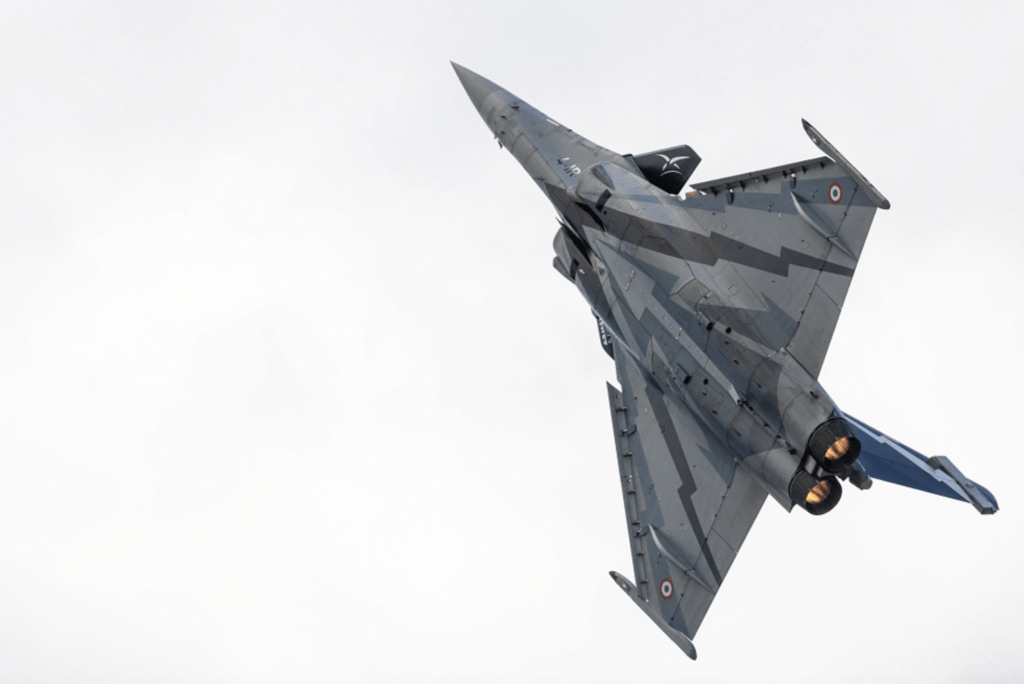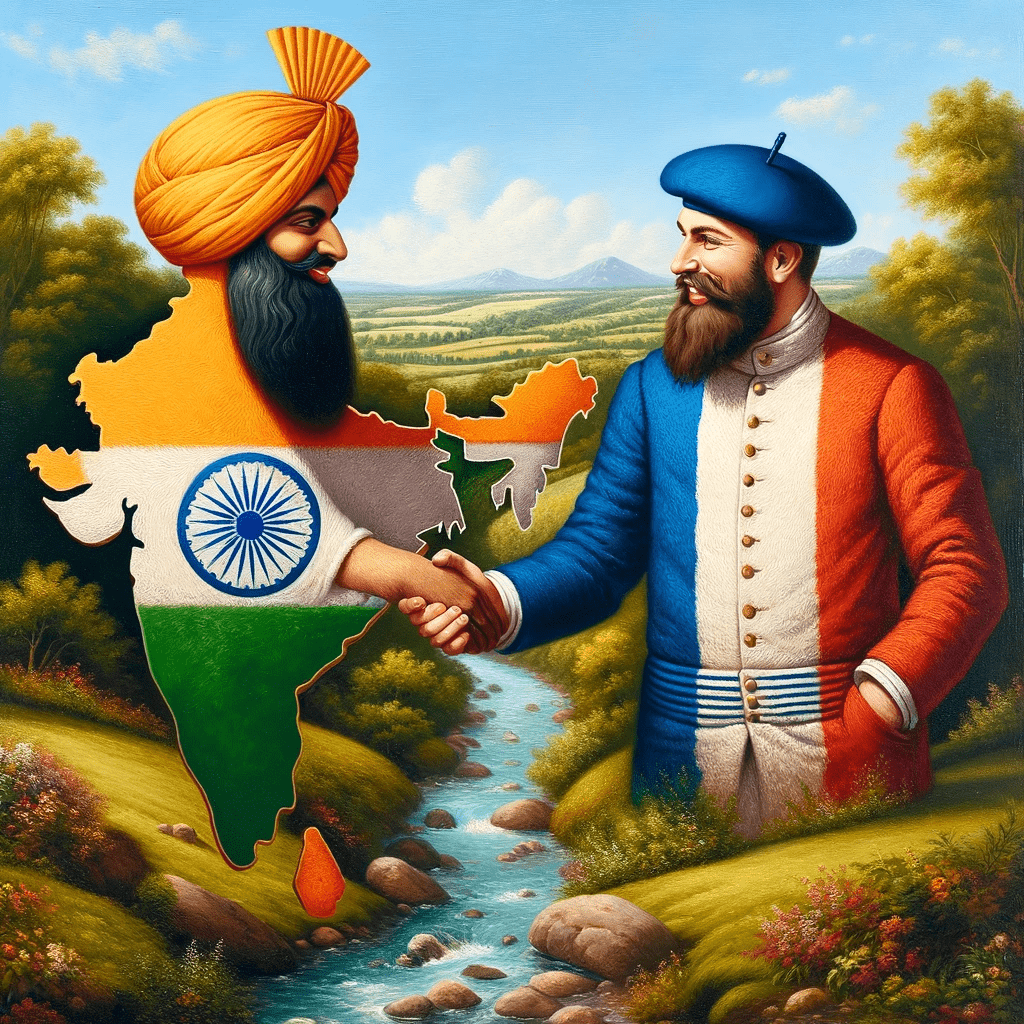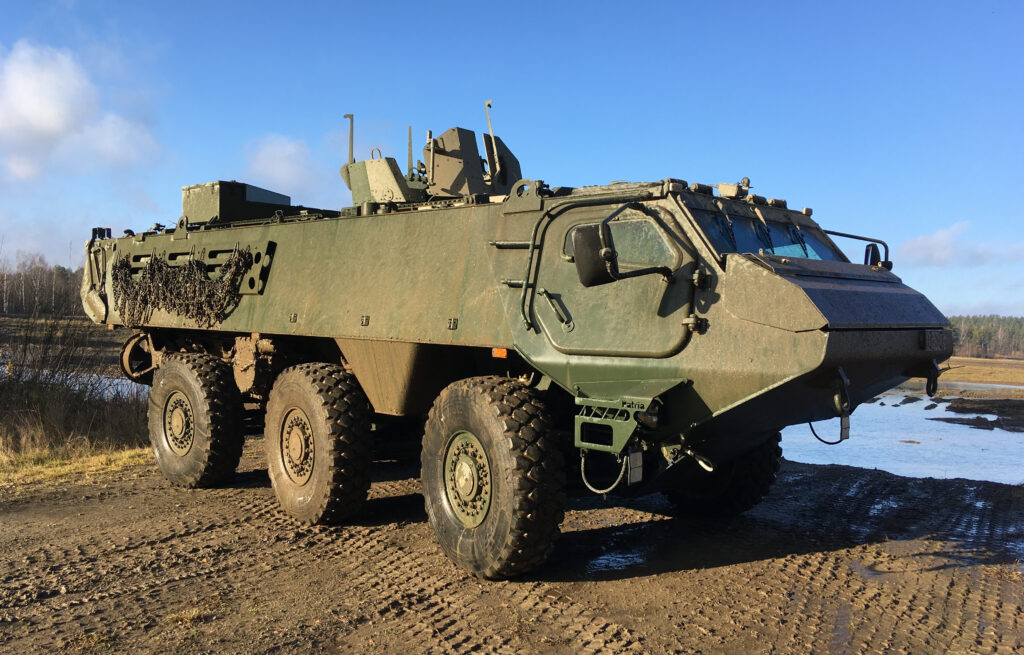For nearly a decade, India has maintained its status as the world’s largest arms importer. Its defence budget for the 2024–2025 fiscal year is 55.4 billion dollars. Amid strained relations with China and aims to decrease depending on Russia, European nations like France and Sweden are intensifying their efforts to sell arms to India, the world’s most populous democracy.
The Indian Defense Ministry has been designated a significant funding amount of $55.4 billion (INR 4.6 trillion) for the 2024-2025 fiscal year, exclusive of pensions and civilian costs. When including pensions, the defense budget rises to $75.7 billion (INR 6.2 trillion).
Of this budget, $21 billion is allocated specifically for the procurement and upgrading of military assets, highlighting a strategic commitment to bolster and modernize the armed forces in line with the changing global security environment.
Historically, Russia has been the primary supplier of India’s military hardware, accounting for 65% of India’s arms purchases over the last two decades. However, recent global events, particularly the Ukraine war, have accelerated India’s efforts to diversify its weapons sources. The United States has emerged as a key partner in this, as the recent approval to purchase 31 MQ-9B SkyGuardian armed drones from the US shows. The Americans have a growing strategic interest in strengthening ties in the Indo-Pacific region to counter China’s influence. This realignment is evidenced by the 2023 deal India signed with General Electric to produce jet engines domestically, a significant move considering it’s the first such U.S. concession to a non-ally.
During 2013–17 Russia’s share of total Indian arms imports fell from 64 percent to 45 percent. France emerged as the second largest supplier between 2018-22. Sweden has also been active in its arms trade after a long dry season with India. Saab will even begin to manufacture its Carl-Gustaf M4 system in India this year, in 2024.

French Soldiers Marching In India
In a significant demonstration of growing military and strategic ties between India and France, a contingent of French soldiers, including a Foreign Legion marching band, participated in India’s Republic Day parade on January 2024. This event marked the anniversary of India’s constitution adoption in 1950 and reciprocates the inclusion of Indian troops in France’s Bastille Day celebrations on the Champs-Elysées.
The participation of French forces in the parade is indicative of France’s increasing involvement in the Asia-Pacific region. This move aligns with the broader Western strategy, led by the United States, to engage India as a pivotal military and economic counterbalance to China’s expanding influence.
Rafale Fighters And Scorpene-class Submarines

President Emmanuel Macron’s administration, before he visited India, emphasized the significance of the partnership, recognizing India as “a key partner in contributing to international peace and security.” This visit is seen as an opportunity for France to further its military ties with India, which is already a substantial customer of French defence hardware, including Rafale fighter jets and Scorpene-class submarines, acquired through multi-billion-dollar agreements.
Dealings Since 1950s
The historical ties between French military aviation and the Indian Air Force (IAF) trace back to the late 1950s and early 1960s, marking the beginning of a long-standing partnership before India had any military engagement with the United States or Russia. Initially, the IAF was equipped with French aircraft such as the Ouragon (Toofani) and Mysteres, along with the reliable Allouette helicopters, which continue to operate in Indian skies.
A significant enhancement in Indo-French military relations occurred in the early 1980s with India’s acquisition of two squadrons of the Mirage-2000, a fighter aircraft that remains advanced even today.
However, a pivotal moment came in 2004 when Dassault Aviation’s CEO made an unprecedented offer to India, proposing the transfer of the Mirage-2000-5 assembly/manufacturing facility to India along with a lucrative deal on the then-developing Rafale jets. This offer, unfortunately, was declined due to the Indian military’s stringent transparency requirements for defence deals, especially in the aftermath of the Bofors scandal.
Flying High
In the fiscal year of 2011-2012, France dedicated a budget of 60 billion US dollars to its defence expenditures and had invested close to 50 billion US dollars in the development of the Rafale jets. Despite this significant investment, the Rafale jets had not attracted international buyers. However, the situation shifted when India decided to select the Rafale jet for a potential deal valued at 10.4 billion US dollars, effectively providing a much-needed boost to the industry that was struggling financially.
This is how the Rafale India deal has evolved through four distinct stages over the years:
- 2004 Unilateral Offer: A missed opportunity for India to strengthen its military at a fraction of the cost.
- 2012 Original Tender Winner: The UPA government selected the Rafale but couldn’t finalize the contract.
- 2016 Acquisition of 36 Rafales: The Modi government altered the initial deal, reducing the order to 36 aircraft, which were all delivered under an Inter-Governmental Agreement (IGA).
- Expected 2024 Deal for 26 Maritime Rafales: Anticipated to be signed during French President Macron’s visit to India in 2024, further bolstering the IAF and the Indian Navy.
Modernizing Indian Military
Under Prime Minister Narendra Modi’s leadership, there has been a marked push towards actively working to modernize its military capabilities and enhancing domestic defence manufacturing. A significant aspect of this modernization effort is diversifying its defence procurement, traditionally reliant on Russia, to include other global suppliers. The ‘Make in India’ initiative, aimed at boosting local production, aligns with these objectives. The goal is to not only reduce dependence on foreign suppliers but also to establish India as a major player in the global defence industry. In line with this, India aims to increase its defence exports to $5 billion by 2024-25, a substantial rise from the current levels.
India’s defence exports in Financial Year 2022-2023 reached a record high of approximately Rs 16,000 crore, marking an over tenfold increase since 2016-17. The country now exports to over 85 nations, showcasing a range of products including Dornier-228 aircraft, Brahmos missiles, Akash missile systems, and advanced towed artillery guns, among others. These achievements reflect India’s growing capabilities in defence manufacturing and a shift towards a more export-oriented approach.
The strengthening of India-France relations also takes into account broader geopolitical considerations. India’s robust economy and vast market have enabled the Modi government to navigate complex international issues, including its human rights record, differing perspectives on the war in Ukraine, and maintaining its longstanding ties with Russia.
Several countries have emerged as key suppliers in India’s arms procurement strategy.
- Russia: Historically, Russia has been India’s largest and most significant military supplier. The longstanding defense relationship between the two countries has included major deals like procuring Sukhoi Su-30MKI fighter jets, T-90 tanks, and the S-400 air defence system.
- France: In recent years, France has become a major supplier of military equipment to India. The most notable deal has been the procurement of Rafale multirole fighter jets, which has significantly enhanced India’s air combat capabilities. France’s military technology and willingness to share sensitive technologies have made it a preferred partner.
- United States: The United States has also become a key defence partner for India. Key deals have included the acquisition of P-8I maritime surveillance aircraft, C-17 Globemaster and C-130J transport aircraft, and AH-64 Apache and CH-47 Chinook helicopters. The growing defence relationship is also seen in the context of broader strategic cooperation in the Indo-Pacific region.
- Israel: Israel is another crucial supplier, particularly in the realm of advanced defence technologies. India has procured a range of Israeli equipment, including Phalcon AWACS (Airborne Warning and Control Systems), Heron and Searcher drones, and the Barak-8 missile defence system. Israel’s cutting-edge technology in areas like missile defence and unmanned aerial vehicles (UAVs) is highly valued by India.
What Drives India’s Arms Imports
India’s position as a major arms importer is influenced by several factors:
- Regional Security Concerns: India’s strategic environment, characterized by longstanding rivalries and border disputes with Pakistan and China, necessitates robust defence capabilities.
- Military Modernization: India’s efforts to modernize its military forces are a key driver of its arms imports. The need to replace aging Soviet-era equipment with modern systems is a significant factor.
- Indigenous Defence Industry Limitations: Despite efforts to boost the domestic defence industry through initiatives like ‘Make in India’, India still relies heavily on imports due to limitations in its indigenous defence manufacturing capabilities.
Make In India
The interim budget of 2024–2025 introduces a novel initiative aimed at advancing deep technology applications within the defence sector, promoting the national agenda of ‘atmanirbharta’ or self-reliance. This initiative is expected to spur innovation, research, and development, contributing to India’s ambition of achieving autonomy in crucial defence technologies.
Significantly, projects such as the LCA-Mk2 fighter and the Future Infantry Combat Vehicle (FICV), slated for development under the ‘Make in India’ campaign, underscore a progressive stance towards cultivating a strong, independent defence industry capable of addressing modern security demands. As a forerunner in a new kind of collaboration, the Swedish Saab has been granted permission to Sweden’s Saab to establish a new facility for manufacturing rockets in India, marking the first instance of 100 percent foreign direct investment (FDI) in the defence sector.
India’s role in the global arms market is likely to continue growing. The focus is expected to be on enhancing air power, upgrading naval capabilities, and improving ground forces. Additionally, India’s increasing emphasis on changing to domestic defence production and collaboration with foreign player – such as joint ventures and technology transfers – is set to shape its future procurement strategies.
India’s arms import strategy reflects its broader geopolitical aspirations and security needs. The country’s significant investments in defence procurement highlight its determination to maintain a strong and modern military force, capable of addressing both current and future security challenges.
Related article: Breaking free from Bad Karma: The Bofors Scandal
Read More:
- The Hindu: India remains biggest arms importer between 2018-22 despite drop in overall imports
- Eurasian Times: Rafale-M – How ‘Heavily Armed’ French Marine Jets ‘De-Escalated’ Tensions Between India & Pakistan In 2002
- Eurasian Times: Rafale Jets: Why India “Rejected” French Aircraft Way Back in 2004 At 25% Of The Costs; Is Acquisition Policy To Be Blamed?
- Indian Defence Research Wing: Indian Navy Plans To Acquire Rafale M Fighter Jets In 2024
- Le Monde: India celebrates France’s Macron at annual military parade
- NDTV: Republic Day Chief Guest 2024 | India To Boost Ties With France With Emmanuel Macron As Chief Guest
- Al Jazeera: India’s Tata and Europe’s Airbus sign deal to manufacture helicopters
- Le Monde: India celebrates France’s Macron at annual military parade
- Reuters: India, France agree on joint defence production
- Deutsche Welle: France’s Macron visits India, eyes trade deals
- Deutsche Welle: France hosts Modi as Bastille Day guest of honor
- AP News: France’s Macron tours historic sites with India’s Modi and will be the chief guest for Republic Day
- Semafor: The significance of Macron’s visit to India
- The Economic Times: Jaipur forts tour, Republic day parade and Rafale deal: French President Emmanuel Macron’s packed itinerary for India trip
- Institute For Security And Development Policy: Macron’s India Visit Solidifies a Trusted Partnership
- India Today: Air Force conducts joint air drills with France, UAE ahead of Macron’s India trip
- NDTV: “Thank You, India”: Macron Shares Glimpse Of Republic Day Parade
- ABC News: French President Macron joins India’s Republic Day celebrations as chief guest
- The Hindu: India-France defence ties take a bigger leap
- France24: India rolls out red carpet for Macron as France hopes to build on trade deals
- India Today: Republic Day: Indian, French pilots participate in grand flypast in New Delhi



